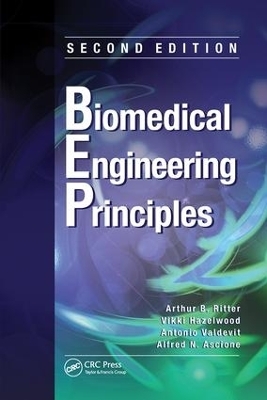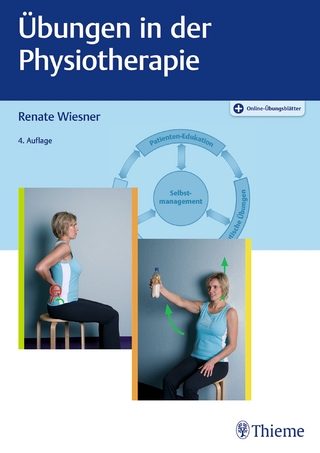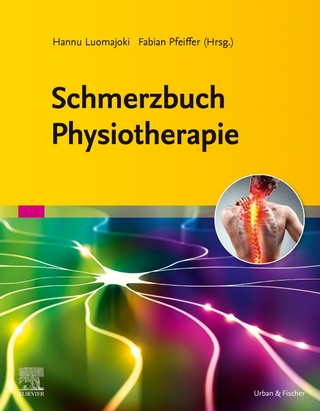
Biomedical Engineering Principles
CRC Press (Verlag)
978-1-138-07324-1 (ISBN)
Assuming no more than a passing acquaintance with molecular biology, physiology, biochemistry, and signal processing, Biomedical Engineering Principles, Second Edition provides just such a solid, accessible grounding to this rapidly advancing field. Acknowledging the vast range of backgrounds and prior education from which the biomedical field draws, the organization of this book lends itself to a tailored course specific to the experience and interests of the student.
Divided into four sections, the book begins with systems physiology, transport processes, cell physiology, and the cardiovascular system. Part I covers systems analysis, biological data, and modeling and simulation in experimental design, applying concepts of diffusion, and facilitated and active transport. Part II presents biomedical signal processing, reviewing frequency, periodic functions, and Fourier series as well as signal acquisition and processing techniques.
Part III presents the practical applications of biomechanics, focusing on the mechanical and structural properties of bone, musculoskeletal, and connective tissue with respect to joint range, load bearing capacity, and electrical stimulation. The final part highlights capstone design, discussing design perspectives for living and nonliving systems, the role of the FDA, and the project timeline from inception to proof of concept.
Cutting across many disciplines, Biomedical Engineering Principles, Second Edition offers illustrative examples as well as problems and discussion questions designed specifically for this book to provide a readily accessible, widely applicable introductory text.
About the Editors: ARTHUR B. RITTER is Distinguished Service Professor and Director of Biomedical Engineering, Stevens Institute of Technology, Hoboken, New Jersey. Dr. Ritter received the B.C.H.E. degree at the City University of New York, New York, and the M.S. and Ph.D. degrees at the University of Rochester, New York. STANLEY REISMAN is Professor of Biomedical Engineering, New Jersey Institute of Technology, Newark. He received the B.S. degree in electrical engineering from the Polytechnic Institute of Brooklyn, New York, the M.S. degree in electrical engineering from the Massachusetts Institute of Technology, Cambridge, and the Ph.D. degree in bioengineering from the Polytechnic Institute of New York, Brooklyn. BOZENA B. MICHNIAK is Professor, Department of Pharmacology and Physiology, Rutgers University, Newark, New Jersey, and Director of the Drug Delivery Laboratory and the Industrial Membership Program, New Jersey Center for Biomaterials, Piscataway. Dr. Michniak received the Ph.D. degree (1980) in pharmacology from Leicester Polytechnic, England.
Introduction: Modeling of Physiological Processes. Cell Physiology and Transport. Principles and Biomedical Applications of Hemodynamics. A Systems Approach to Physiology. The Cardiovascular System. Biomedical Signal Processing. Signal Acquisition and Processing. Techniques for Physiological Signal Processing. Examples of Physiological Signal Processing. Principles of Biomechanics. Practical Applications of Biomechanics. Biomaterials. Principles of Biomedical Capstone Design. Unmet Clinical Needs. Entrepreneurship: Reasons why Most Good Designs Never Get to Market. An Engineering Solution in Search of a Biomedical Problem to Solve. Tissue Engineering. Future Trends in BME.
| Erscheinungsdatum | 06.07.2018 |
|---|---|
| Zusatzinfo | 22 Tables, black and white; 256 Illustrations, black and white |
| Verlagsort | London |
| Sprache | englisch |
| Maße | 156 x 234 mm |
| Gewicht | 453 g |
| Themenwelt | Medizin / Pharmazie ► Pharmazie |
| Medizin / Pharmazie ► Physiotherapie / Ergotherapie ► Orthopädie | |
| Naturwissenschaften ► Biologie | |
| Naturwissenschaften ► Chemie ► Technische Chemie | |
| Technik ► Maschinenbau | |
| Technik ► Medizintechnik | |
| Technik ► Umwelttechnik / Biotechnologie | |
| ISBN-10 | 1-138-07324-5 / 1138073245 |
| ISBN-13 | 978-1-138-07324-1 / 9781138073241 |
| Zustand | Neuware |
| Informationen gemäß Produktsicherheitsverordnung (GPSR) | |
| Haben Sie eine Frage zum Produkt? |
aus dem Bereich


